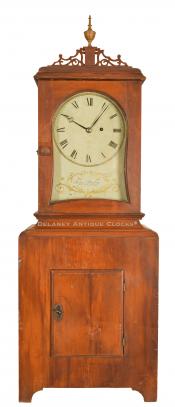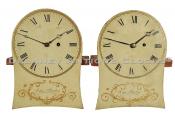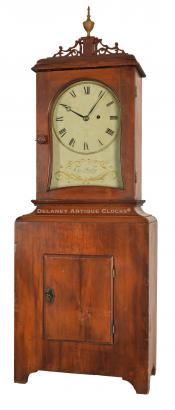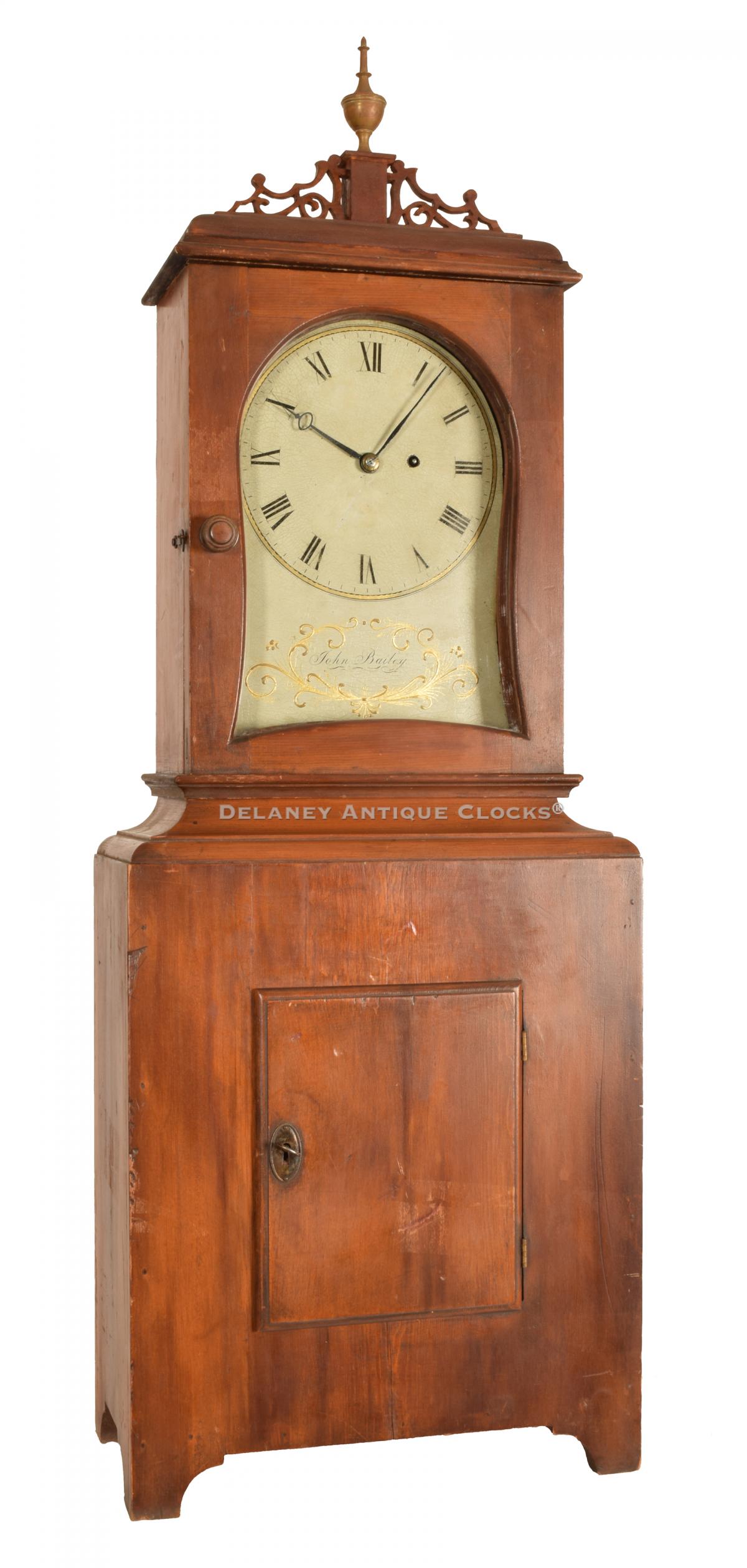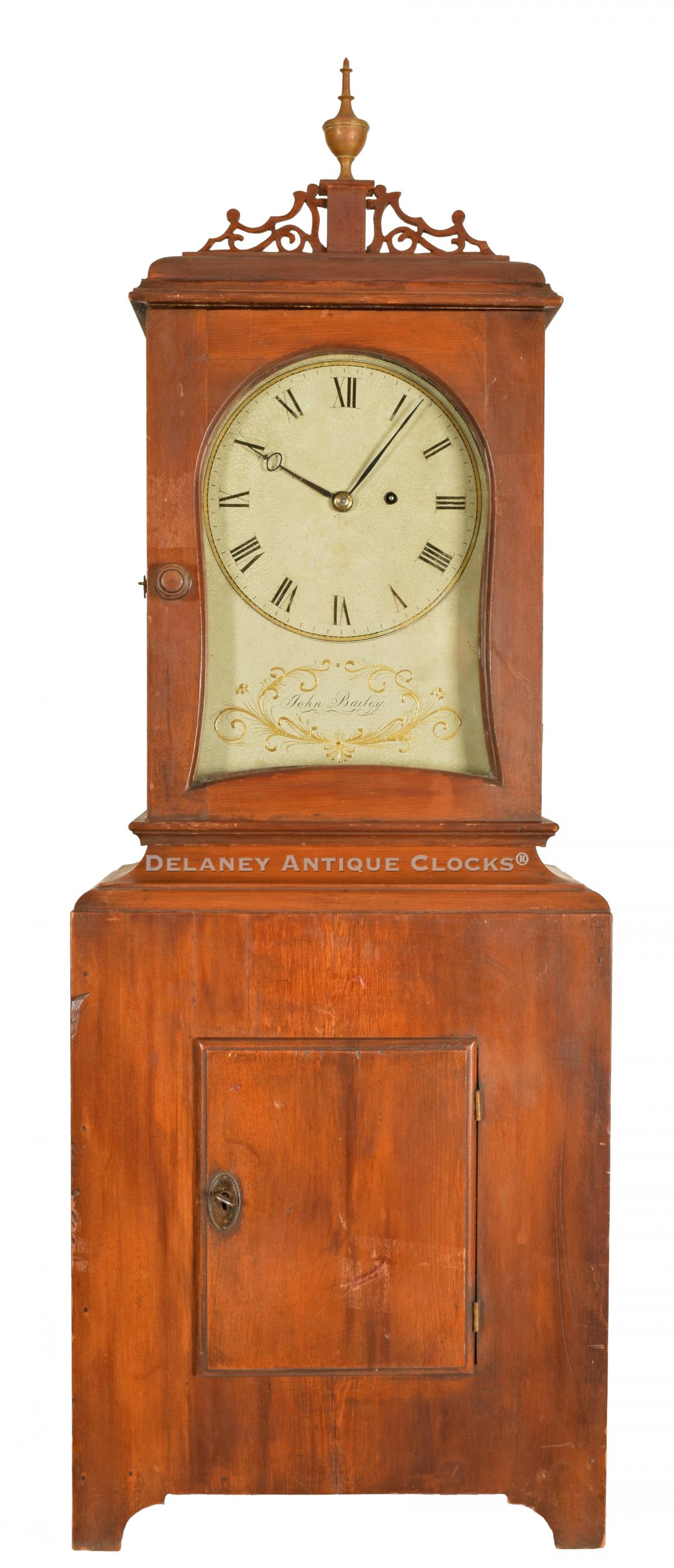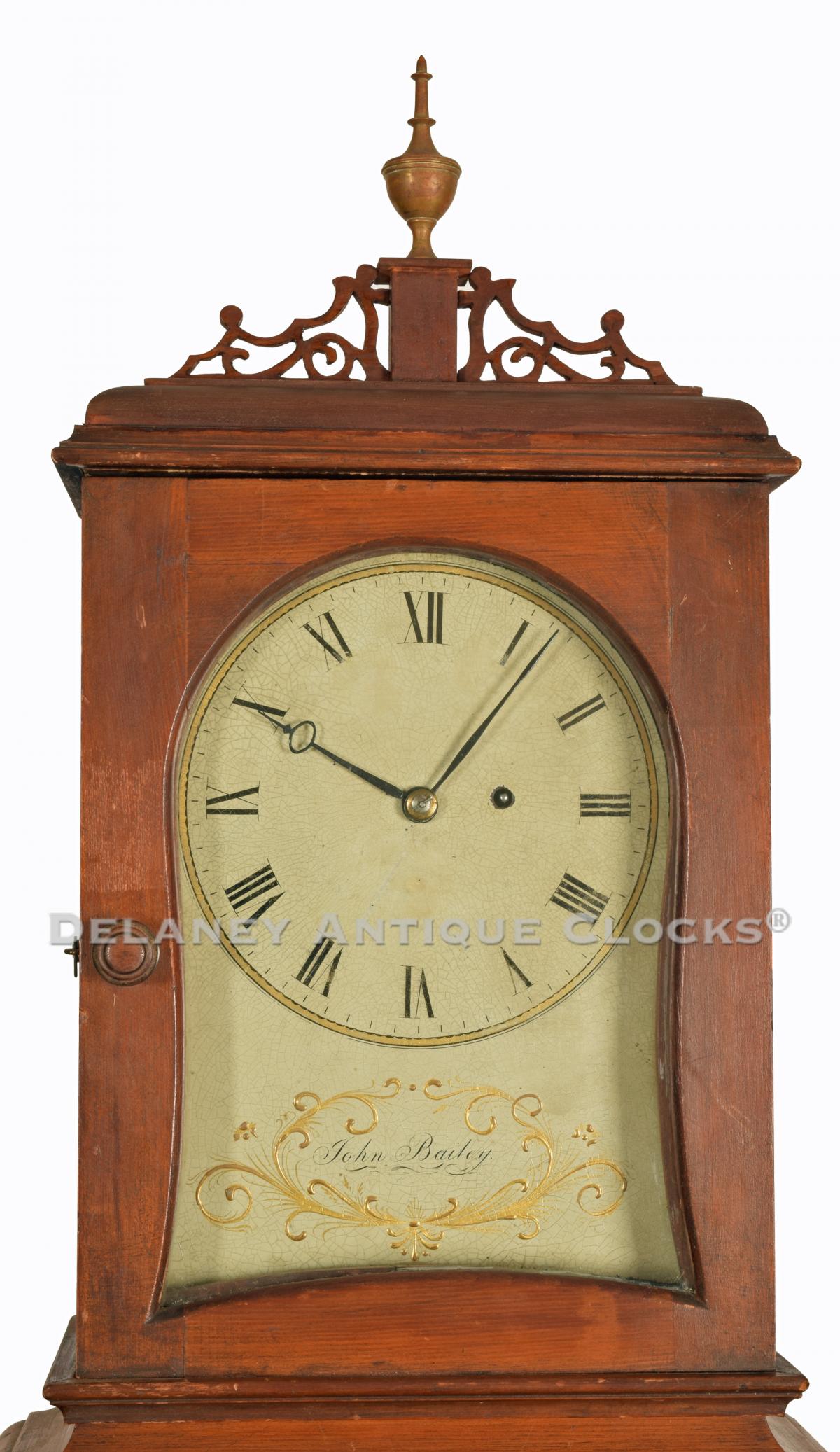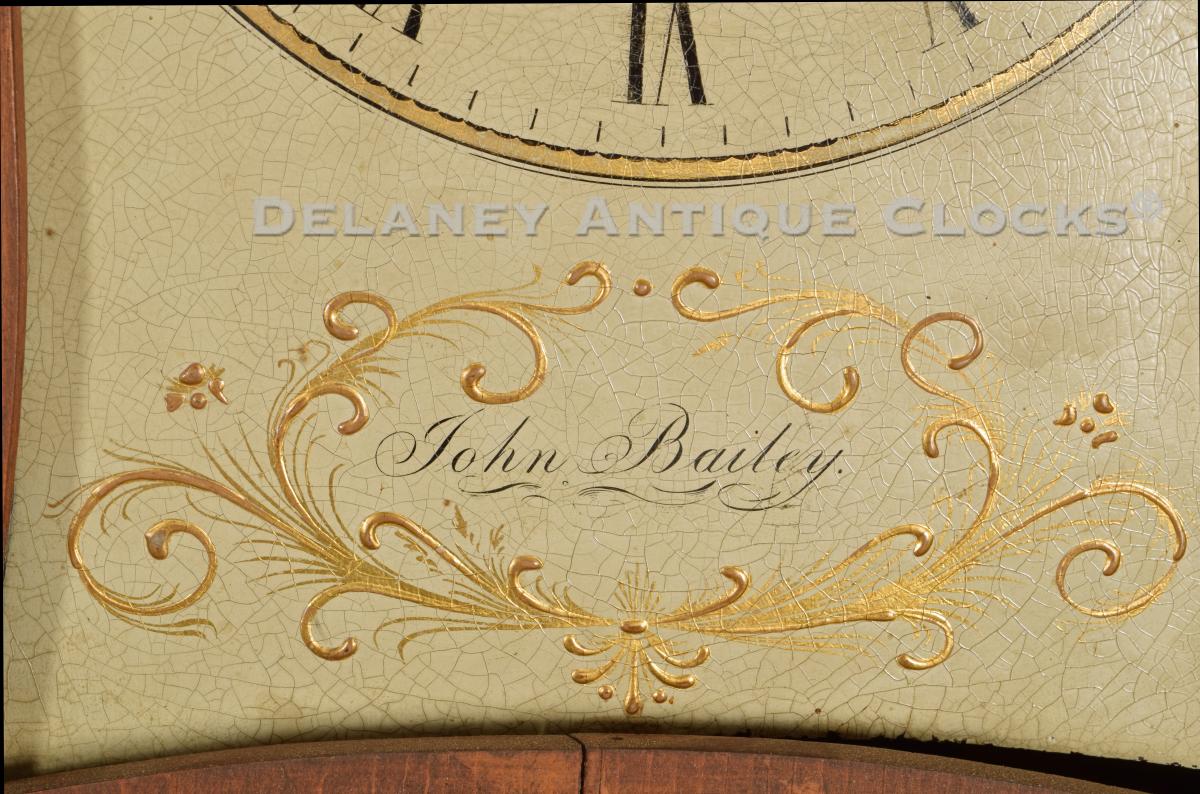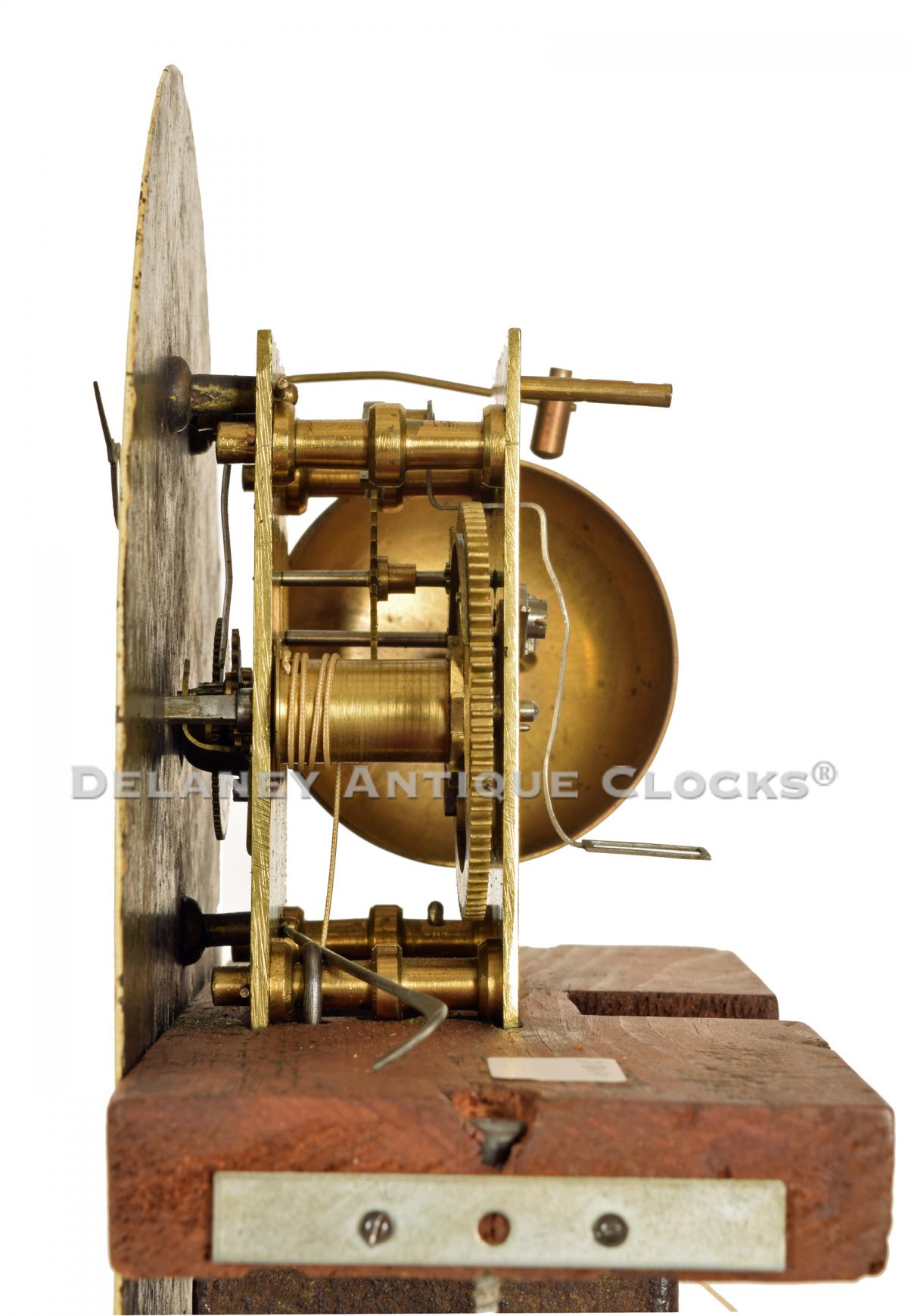John Bailey II of Hanover, Massachusetts. A pine-cased Massachusetts Shelf Clock. 218014.
This is a very unusual shelf clock made by the Hanover, Massachusetts, Quaker clockmaker John Bailey II. John Bailey II was born the son of John and Ruth Randall Bailey on May 6th, 1751. He learned clockmaking at a very young age and is responsible for training numerous apprentices over his long working career. Those credited with being trained by him include his younger brothers Calvin and Lebbeus and his son John III. He also trained Joseph Gooding, Ezra Kelley, and Hingham’s most famous clockmaker Joshua Wilder. John II was the most prolific clockmaker of the six Baileys that were involved in the clock business. Over the years, we have owned a fair number of clocks made by him. Some of which included tall case clocks, dwarf clocks, and the Massachusetts shelf clock form.
This country example is one of the very few Bailey-made clocks found cased in pine. It is currently one of three examples known to us that features this softwood. One of the two other examples is nearly identical in form but now features a lighter finish. I speculate that all three clocks may have originally been paint-decorated. The example discussed here was stained in a brown tint many years ago. The finish appears to be old and is now attractive.
This example is supported by a simple cutout bracket base that forms four feet. The base section is long. The front panel is fitted with an access door in the center. The door is hinged and locks closed with a key. Inside the case, at this location, are the pendulum and weight. A traditional waist molding is fitted to the top of the base. The lower section of the hood is fitted with molding that sits on top of the narrow area of the cove shaping. The hood is constructed with a molded top. Above this is a rectangular-shaped finial plinth that is capped at the top. The plinth supports a single urn-shaped brass final. A pierced and open fretwork design is attached to the plinth. The rectangular-shaped hood door frames the kidney-shaped dial. It is fitted with glass and opens to access the dial.
This painted iron dial is a Boston-made product. A gold band frames the open minute ring and the Roman-style hour numerals. The Maker’s name, “John Bailey,” is signed in the center field below the time display. It is framed with a decorative scrolling design composed of applied gesso raised off the surface of the dial, which is highlighted with gilding. The two steel hands are wonderfully made and nicely detailed.
Behind the dial is a brass weight-driven movement. It is designed to run for eight days on a full wind. The brass rectangular-shaped plates are joined with four turned posts and are supported by a seat or a saddle board. The plates have a reddish cast due to the brass's high amount of copper content. You may also notice the bell that is mounted off to the side of the works. This clock mechanism is fitted with a fall-off striking arrangement. At the hour, a pin will raise the hammer. Once the lever slips past the pin, the hammer will drop, striking the bell one time. This simple arrangement is called a fall-off strike. The pendulum features a steel rod and a brass-faced lead bob.
This fine clock was made circa 1810. The overall height is 38.5 inches tall to the top of the wooden finials. This case is 18.5 inches wide and 7.25 inches deep.
Inventory number 218014.
John Bailey II was born on May 6, 1751, in Hanover, Massachusetts, the son of Colonel John Bailey, a shipbuilder, and Ruth Randall Bailey. He died there 72 years later, in 1823. It is believed he learned clockmaking at a young age and may have been self-taught. John t on January 23, rained numerous apprentices, including his younger brothers Calvin and Lebbeus, his son John III, Joseph Gooding, Ezra Kelley, and Joshua Wilder from Hingham. Many of his apprentices moved to other towns in southeastern Massachusetts and became well-known in their communities. John was the most prolific clockmaker among the six Baileys involved in the craft.
John's clocks can be categorized into two main types. The first is a home-developed style, which often features sheet brass dials that are engraved and treated with a silver wash. Several examples we know of have movements constructed from wood, while others are made of brass with fully skeletonized plates. Some later models incorporate wooden winding drums. Notably, he produced both types of strike trains; we have seen signed examples that feature a count wheel setup and the more common rack and snail configuration. Very few clockmakers used both setups. The cases are usually made from indigenous woods like maple and cherry, showcasing pleasing country proportions without the sophistication of the Roxbury School. The 'Roxbury/Boston influence' refers to the design and craftsmanship styles that were popular in these areas at the time. Around 1790, this influence likely played a significant role in John's production. The movements in these examples more commonly feature fully plated mechanisms. Additionally, the cases resemble those produced by the Willard School to the north, which often showcase mahogany cases decorated with inlays. This second generation of output appears much more formal.
Over the years, our collection has included a diverse range of clocks crafted by John Bailey II. From tall-case clocks to dwarf clocks, banjo or wall timepieces, and the unique Massachusetts shelf clock form, his versatility as a clockmaker is truly intriguing.


